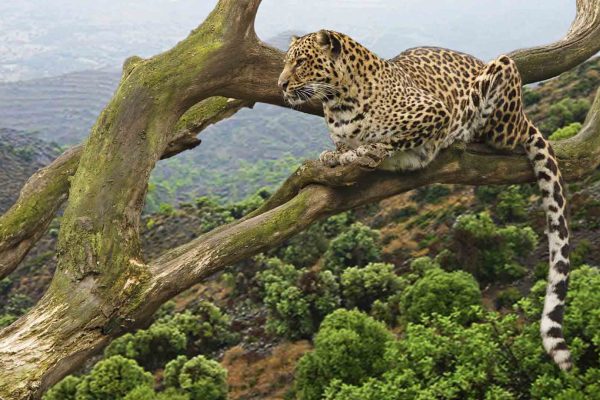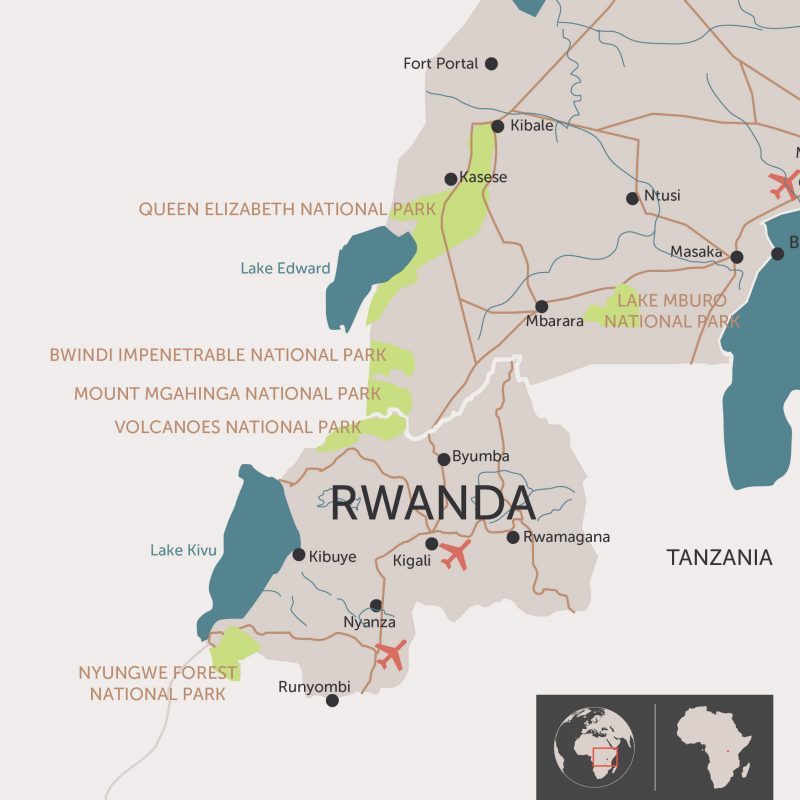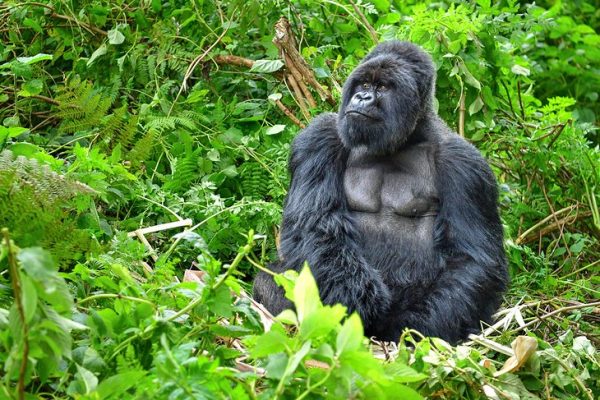Rwanda
Overview
Africa’s easiest and most accessible gorilla trekking is the main draw card of a Rwandan safari. After arriving at the capital city of Kigali, you are only a few hours’ drive away from the legendary Volcanoes National Park and its habituated but still wild gorilla families.
It was on the bamboo-covered slopes of Rwanda’s Virunga Volcanoes that the late Dian Fossey studied the behaviour of the endangered mountain gorilla for 20 years, followed by the filmmakers who shot Gorillas in the Mist. Now small groups of privileged visitors can experience one of the most memorable wildlife encounters on earth – gorilla trekking through the pristine Virungas rainforest.
Rarely experienced in isolation, a Rwandan gorilla safari combines well with other East African destinations in Uganda, Kenya or Tanzania but there is more to green and hilly Rwanda than meets the eye: it is also home to the primate-filled Nyungwe Forest National Park where there are chimpanzees and fantastic bird-watching opportunities. Akagera National Park, on the other hand, offers big game viewing in a diverse savannah setting.
Lake Kivu is a gorgeous expanse of water surrounded by Rwanda’s gently rolling slopes – in fact, Rwandans call their home ‘the country of a thousand hills’ because of its undulating landscape. Kivu is a great place to enjoy boating, hiking, kayaking and chimp trekking.
Small, compact and easy to travel around, friendly Rwanda has dealt with its past tragedies and offers intrepid travellers and wildlife enthusiasts what is usually a hard-to-gain insight into Central African cultures, wildlife and environments. Simply browse our range of popular tour itineraries and recommended accommodation or contact one of our African Safari Experts for assistance with planning a tailor-made Rwandan safari.
Summary
Tick off your bucket list with these
Tanzanian experiences
Immerse yourself in the culture, exploring local cuisines, wandering the markets, learning a new language or snorkelling in the depths of the Indian Ocean - all whilst being surrounded by untouched nature and pristine sandy beaches.
Safari book nowAttractions

Maps
Maps




